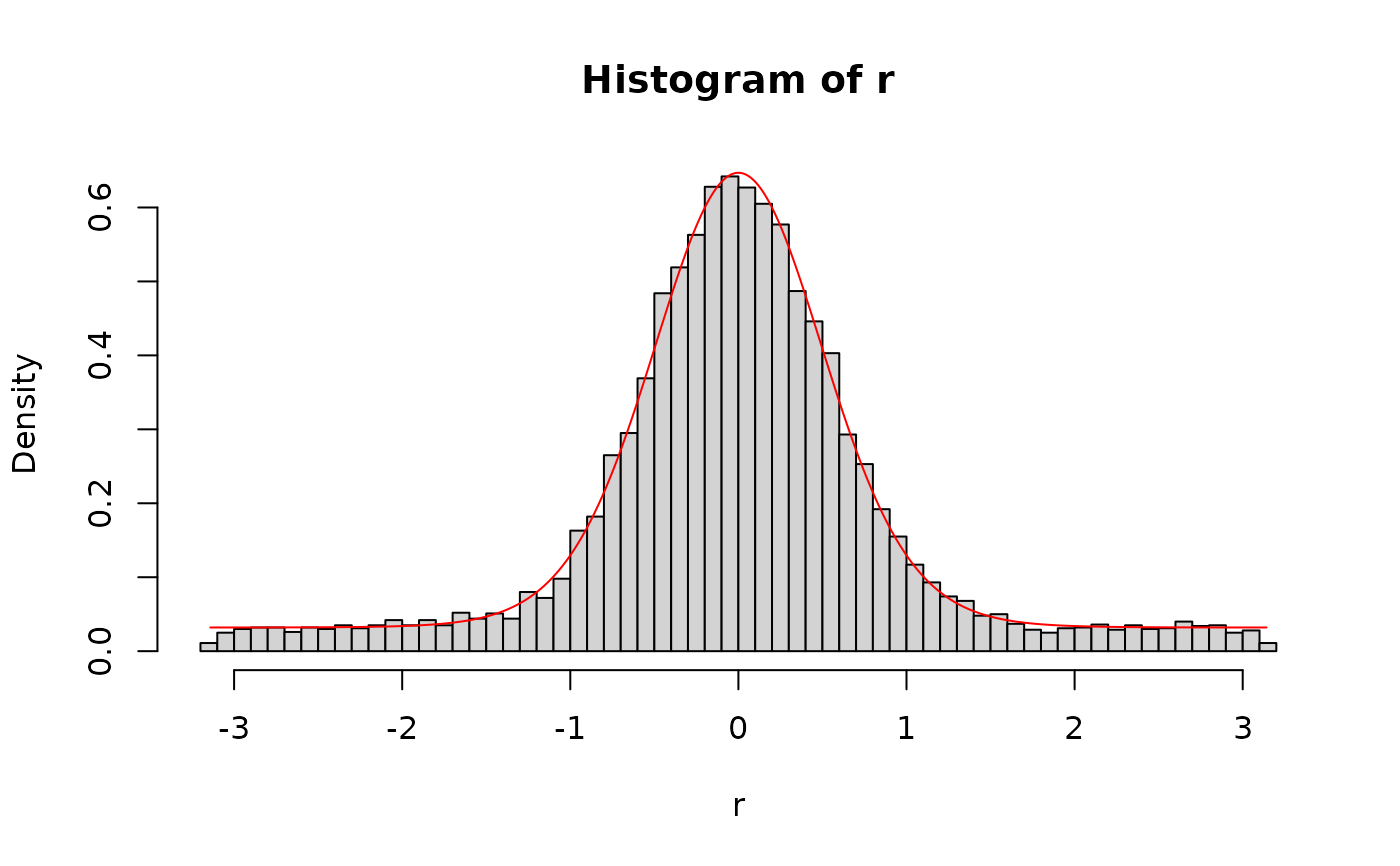Distribution functions for the two-parameter mixture model (mixture2p)
Source:R/distributions.R
mixture2p_dist.RdDensity, distribution, and random generation functions for the
two-parameter mixture model with the location of mu, precision of memory
representations kappa and probability of recalling items from memory
p_mem.
Usage
dmixture2p(x, mu = 0, kappa = 5, p_mem = 0.6, log = FALSE)
pmixture2p(q, mu = 0, kappa = 7, p_mem = 0.8)
qmixture2p(p, mu = 0, kappa = 5, p_mem = 0.6)
rmixture2p(n, mu = 0, kappa = 5, p_mem = 0.6)Value
dmixture2p gives the density of the two-parameter mixture model,
pmixture2p gives the cumulative distribution function of the
two-parameter mixture model, qmixture2p gives the quantile function of
the two-parameter mixture model, and rmixture2p gives the random
generation function for the two-parameter mixture model.
